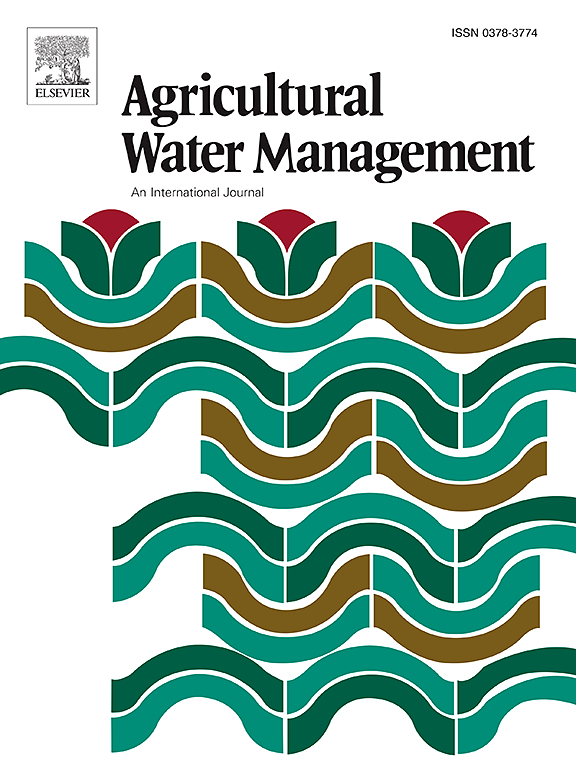黄河流域现有灌区产品适宜性比较与评价
IF 6.5
1区 农林科学
Q1 AGRONOMY
引用次数: 0
摘要
灌溉农田的准确监测对水资源管理和粮食生产预测至关重要。虽然遥感加强了全球灌溉监测,但仍然需要对现有产品进行系统的比较。本研究以黄河流域为例,对gfsad、GMIA-Meier、GMIE、IAAA、IrriMap-CN和xiang4个灌区产品进行了评价。对TPD-FIWEC、FSD、ASMD和msmd四种原位测量数据进行分析,得到5382个点的验证数据集。基于面积和空间精度的结果表明,GMIE的相对面积偏差(RAD)为17.33 %,总体精度(OA)为0.72,一致性指数(CI)为0.65,遗漏和委托误差(OE和CE)均在0.40以下。交叉比对显示,只有22.62 %的灌溉像素被三个以上的产品识别。综合评价指数(CEI)分析揭示了区域性能差异,特别是在LZ至TDG,中海拔地区和北部干旱/半干旱和潮湿气候地区,其中一些产品表现良好。该研究为灌区产品在水资源管理中的应用提供了坚实的基础,并为未来的优化提供了建议。本文章由计算机程序翻译,如有差异,请以英文原文为准。
Comparison and evaluation of the suitability of existing irrigation area products in the Yellow River Basin
Accurate monitoring of irrigated farmland is crucial for water resource management and food production forecasting. While remote sensing has enhanced global irrigation monitoring, a systematic comparison of existing products is still needed. This study evaluates six irrigation area products—GFSAD, GMIA-Meier, GMIE, IAAA, IrriMap-CN, and Xiang—using the Yellow River Basin as a case study. Four types of in-situ measurement data— TPD-FIWEC, FSD, and both ASMD and MSMD—were analyzed, resulting in a validation dataset of 5382 points. Results based on area and spatial accuracy showed that GMIE performed best, with a relative area deviation (RAD) of 17.33 %, overall accuracy (OA) of 0.72, a consistency index (CI) of 0.65, and both omission and commission errors (OE and CE) below 0.40. Cross-comparison showed that only 22.62 % of irrigated pixels were identified by more than three products. The Comprehensive Evaluation Index (CEI) analysis revealed regional performance variations, particularly in areas such as LZ to TDG, the Mid-altitude region, and the Northern arid/semi-arid and Humid Climate regions, where several products performed well. This study provides a solid foundation for applying irrigation area products in water resource management and offers recommendations for future optimization.
求助全文
通过发布文献求助,成功后即可免费获取论文全文。
去求助
来源期刊

Agricultural Water Management
农林科学-农艺学
CiteScore
12.10
自引率
14.90%
发文量
648
审稿时长
4.9 months
期刊介绍:
Agricultural Water Management publishes papers of international significance relating to the science, economics, and policy of agricultural water management. In all cases, manuscripts must address implications and provide insight regarding agricultural water management.
 求助内容:
求助内容: 应助结果提醒方式:
应助结果提醒方式:


